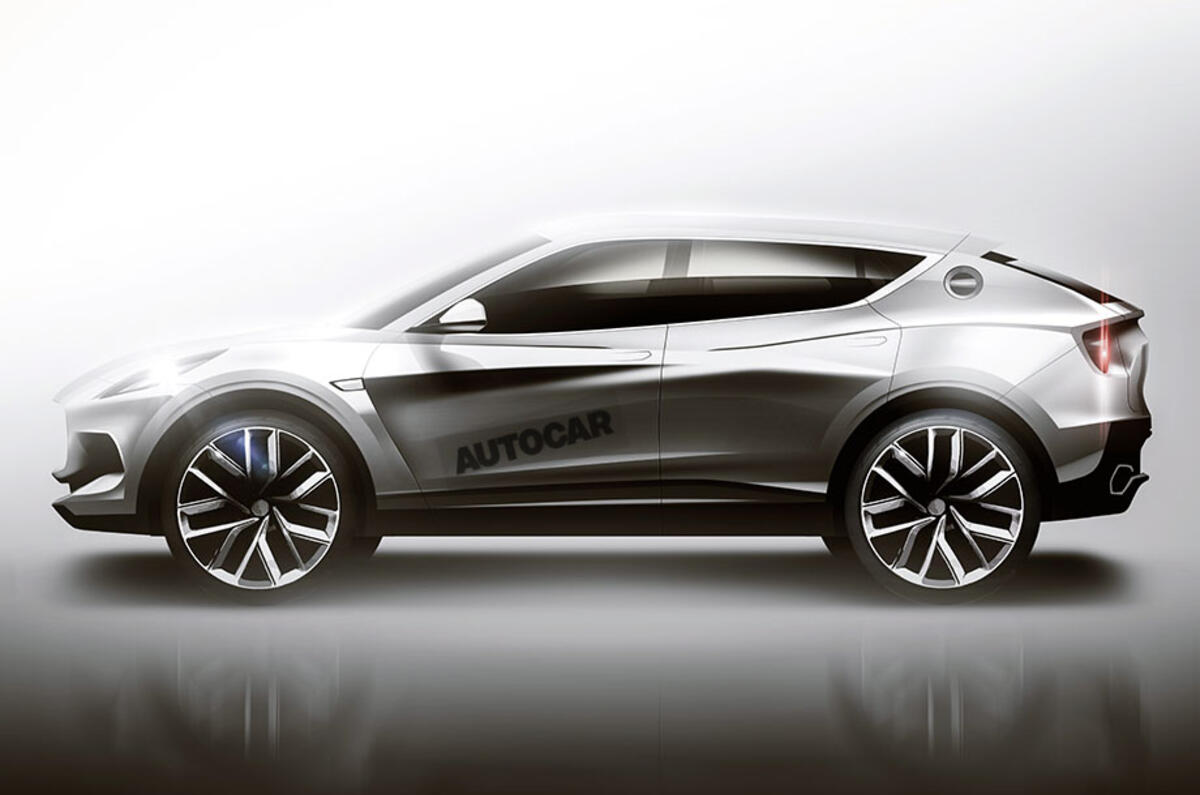Lotus is considering reintroducing the Elan name on a new drop-top sports car, as well as other models in a back catalogue that includes the Elite, the Europa and the Esprit.
The Elan name is said by sources at the Hethel-based firm to have a strong possibility of being revived in the next few years. Few of the details are known at this stage but insiders are said to be “very excited” by the proposed configuration of this car, which is expected to be positioned above the Lotus Elise as a two-seat convertible with more refinement, space and creature comforts to take on the Porsche Boxster. Despite this, the new car should stick to the classic Lotus traits of being lighter than rivals and among the best in its class to drive.
The company is developing an all-new, rivet-bonded platform to replace its two existing structures – with the Elise/Lotus Exige architecture dating back to 1995, and the Lotus Evora to 2008. The all-new platform, which is around two years away, will provide the basis for a new sports car range including the Elan.
The proposed new model would be the third-generation Elan; the first highly regarded version of this sports car series was introduced in 1962. The platform family on which it’s broadly based is the central plank of a new product cycle plan that’s part of Lotus’s 10-year ‘Vision 80’ strategy.

Before these newcomers, Lotus will launch the last variation on the current Evora platform, a new sports model. It will appear late next year as a very driver-focused package but it will also be significantly easier to get in and out of than current models and have much improved ergonomics. Alongside this, CEO Phil Popham has expressed a need to overhaul the brand’s rather limited connectivity technology, so we could see new Lotuses ditching the usual aftermarket stereo systems for a bespoke infotainment set-up.
Planning a decade ahead is a given for most car makers but a strategic rarity for Lotus. It has been enabled by the Vision 80 investment programme led by Popham. In the past, the company has typically had the resources to develop only one car at a time. Now it can realise a complete product plan.
The scale of this investment has been estimated at around £1.5 billion by Bloomberg, although this figure is said to be “very conservative” by a Lotus spokesman. That sum should be enough to pay for the new architecture, whose structural concept will be similar to the current platform.
Lotus will retain the rivet-bonded alloy core concept, which, insiders say, provides excellent overall stiffness and allows plenty of scope to increase local rigidity for different models. These qualities will be essential if the high-grade driving dynamics promised by the company’s ‘for the driver’ brand ambition are to be achieved.

The rivet-bonded approach also suits Lotus’s sales goals. Although the firm is aiming to increase sales sixfold – from last year’s 1630 cars to around 10,000 by 2029 – this vehicle construction method reportedly remains the best solution for Lotus’s relatively low volumes.
The rivet-bonded and composite structure is also light – essential to the Lotus mission – and its detail design will benefit from the brand’s 25 years of production experience with this technology.
As before, a mix of materials will be used, probably across a wider palette that includes carbonfibre and several metals. A key ambition will be to reduce the time required to build each car, say insiders. That will be achieved by reducing the time it takes to bond each structure and also by cutting the number of hours required to assemble a car, the corollary of which should be improved quality.
Containing costs will be aided by the use of ‘keep zones’, the term Lotus engineers use to describe the three-dimensional slices of architecture that will be shared among all cars using this new platform. One example is the position of the front wheel relative to the driver’s seat, a high-investment zone of the platform that it makes sense to retain across all versions. But the ‘keep zones’ strategy doesn’t preclude tailoring the wheelbase and track to suit the needs of different models, insiders say.

As for the new model being introduced late next year, this will be the last new variant to be developed on the current Evora platform and much effort has been expended on ergonomics. That includes not only the driving position and forward visibility but also the ease of getting into and out of the car, a drawback of the current models that has limited sales.
Given the wide variety of cars to be derived from the all-new platform – from track-only models via an Elan to the Evora and Esprit supercar, which is also understood to bea long-term goal for Lotus – the scope for a variety of dynamic and functional levels will need to be built in. The company has reportedly done a lot of work assessing competitor cars to define these goals at the outset for each new model.
The targets also include the cars’ electrical functionality. Insiders have reported that membership of the Geely Group is giving Lotus affordable access to everything from infotainment systems and electronic dampers to electric power steering technology. The last of these will be essential for providing the advanced driver assistance systems mandated by law in some markets, but there will also be models, probably track-focused ones, with unassisted steering.

Regulations and a shifting market will also demand that alternative powertrains be developed and these are said to be under evaluation. But, as Lotus found when developing the Tesla Roadster from the Elise, packaging large numbers of battery cells can affect both the platform’s design and the car’s dynamic behaviour, which Lotus will hope to limit in part by harnessing tech from Geely.
The recent announcement of a Geely combustion engine and hybrid development centre, created by combining the Volvo and Geely internal combustion development departments, would provide a source of expertise.
A further sign of the more substantial resources behind Lotus is the plan to develop all models for worldwide homologation from the start, as well as building in the scope to cater for the customer requirements of markets such as China and the US. The long-mooted SUV will be key to these markets. It is tipped to become Lotus’s ‘cash cow’ in the same way the volume-selling Porsche Cayenne and Porsche Macan have become for Porsche. “Today, Porsche is our benchmark,” Group Lotus CEO Feng Qingfeng told Autocar earlier this year.
READ MORE
All-new Lotus model due next year
Lotus reveals 1973bhp Evija as world's most powerful production car

























Join the debate
Add your comment
Pricing Pricing Pricing
It's all about pricing.
Nobody will pay more for a Ford than, say, a BMW even if they believe the Ford to be a better car.
Nobody will pay more for a Mercedes than a Rolls Royce,
There is a pecking order in car brands and Lotus has its place. It's just not up there with Porsche. So even in the unlikely event they come up with an Elan that's better than a Boxster, it won't sell at any more than, say, 90% of Boxster pricing. And, considering the lower volumes at which an Elan will sell, its hard to see how Lotus/Geely can make a business out of this. Current prices for new Elises are a joke and the idea that an Elan could command a higher price even funnier.
With Volvo it was different: higher image and pricing, solid reputation for reliability and safety.
Lotus? Not so much.
Robbo
Good luck to Lotus
Many people have forgotten, or don’t know, the many great achievements of the Lotus brand, thanks to their recent history of poor sales and an aging range, so it’s important, to many car enthusiasts at least, that they survive and have a bright future.
I’d love them to make an affordable, stripped out sports car to rival the MX-5, but as the current basic trim Elise is about as stripped out as you can get and still costs way over £30k, I find that unlikely. Maybe the Geely Group will help with development costs to make a car like that happen.
Aside from that, there have been lots of times I’ve looked for a certain niche of car only to be disappointed by the boring, formulaic cars out there. Maybe Lotus, as a low volume manufacturer, could achieve success providing those kinds of niche vehicles that appeal to the heart rather than the head and a wider audience (thus repeat the success of manufacturers like Mini, with a bit of clever, and possibly sentimental, marketing).
For example, a small 2 door sports saloon in the vein of old fast Fords such as the original Lotus Cortina or MK1 Escort Twin Cam, offering a simple, driver-focused experience (with a degree of practicality to make them ‘every day’ cars) rather than gadget-laden cars like the BMW 2 series.
I don’t think many would be brave enough to spend a lot of money on top-end luxury sports cars from Lotus just yet, so more affordable, cheaper cars are the way to go.
I wish Lotus well but if you
I wish Lotus well but if you look at year on year sales figures in Europe and the US for various sportscars with 5 figure prices, it's clearly a declining market, and the latest batch of 20-35 year-olds doesn't seem to me to have a high proportion of driving enthusiasts, at least anecdotally. They want Ubers and electronic toys, not the joys an Elan could deliver. If they keep the Elise or its replacement, then make the Elan more practical, which is where the MX-5 is a failure: very cramped accomodation, no door pockets, no glovebox, no centre console storage, just a hole between the seat-backs big enough for a beer can or two, and a very small boot.